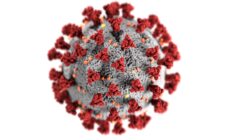What is cirrhosis
Cirrhosis is the critical stage of long term abnormality in liver or the chronic stage of liver disease with the characteristic presence of irreversible scar tissues. It will progress and finally damages the liver function. It is the chronic liver disease and is one of the leading cause of death in the world.
What is the function of liver:
The liver is one of the major organs in the body. It is situated at the upper right side of the abdominal cavity just below the diaphragm slightly above the stomach. Liver has two lobes with a duct called hepatic duct in it. Through this duct bile secreted is carried to gall bladder and duodenum.
The main function of liver is to
Remove harmful and unwanted toxins from the body and produce pure blood with vital nutrients needed.
Store extra nutrients in the body and supplying when needed.
Store glucose in the forms of glycogen and release at emergency.
Produce bile to digest the fat in the food we eat.
Control the blood levels of amino acid and blood clots.
What are the causes of cirrhosis:
Cirrhosis is caused by various reasons affecting the liver as follows
Alcohol addiction – addiction to alcohol drinking for long term or chronic alcohol drinking leads to the inflammation of the liver and causes cirrhosis.
Chronic infectious conditions- like hepatitis B and C. The hepatitis viruses are strong enough to produce inflammation of the liver cells and damage its function leading to cirrhosis.
Auto immune diseases – immune system is harmfully attacking own body cells and damaging the functions. Few diseases are capable of attacking the liver function.
Bile ducts – the bile ducts may be poorly formed or badly destructed and bile production is obstructed.
Improper or irregularities in the storage function of liver in turn damage the liver itself.
Fat deposition – excess of fat deposited in the liver damages the liver and its functions.
WILSON`S disease – excess of copper build up in the liver.
HEMOCHROMATOSIS disease – excess of iron build up in the body.
Heart failure – present with the liver congestion can lead to cirrhosis.
Drugs – some drugs are very damaging to the liver function.
Environment – exposure to the harmful environmental toxins can tax the liver cells and its function.
What are the Signs and symptoms:
When liver fails to function properly it shows following symptoms.
Chronic fatigue – tiredness feeling experienced all the time.
Weakness of the body.
Loss of appetite – some reduction in the desire to eat food.
Total lack of energy.
Unknown weight loss.
Nausea.
Jaundice – change in the colorization of the skin to yellowish color.
ASCITES – fluid collection or retention in the abdomen.
Edema – fluid retention mainly in the legs.
Bruising – easily felt bleeding especially in the nose due to decreased blood clot proteins and defect seen in the blood vessels.
Itching.
Tremors – sudden feeling of muscle shakiness.
Breathing difficulty – shortness of breathing is felt.
Mental confusion – few changes seen in the personality of the person associated with confusion.
Congestion – a type of congested feeling or pain is felt in the liver region.
Muscle wastages – reduction seen in the muscle mass.
Severe vomiting and diarrhea.
GYNECOMASTIA – breast enlargement seen in men. Damaged liver fails to destroy the estrogen hormone production.
How to do Diagnosis of cirrhosis:
Physical examination:
The doctors conduct few physical tests to detect cirrhosis. Mainly the symptoms that are physically seen will determine the cirrhosis condition and progress.
Knowing the history of patient and the symptoms seen the risk for cirrhosis is cleanly detected.
Blood test:
Blood test is done to reveal the disturbances in the enzymes that are associated with the liver function.
Serum albumin – reduction in concentration of the serum albumin protein in blood will indicate the damage of liver function.
Pro thrombin test – this test measures the clotting time of the blood.
Alkaline phosphate level – increase in the level of alkaline phosphate indicate the blocked bile ducts in the liver.
BILIRUBIN level – it is a reddish yellow pigment seen in higher concentration in the blood when the liver is damaged completely with disturbed BILIRUBIN metabolism.
Image test:
The image tests show the extent of the damage of the liver. The image tests are done by MRI scan, CT scan and ultrasound.
Liver biopsy:
Liver biopsy is the method of taking sample of the liver tissue for examining under the microscope. This biopsy technique shows the severity of the liver damage.
Severe Complications of cirrhosis:
The cirrhosis of liver has several complications on the other systems function. Severe progression of cirrhosis can be life threatening.
Several common complications associated are
Portal hypertension – damaged liver has a increased pressure in the portal veins. This leads to severe bleeding.
Hepatic encephalopathy – it is the damage of brain due to the accumulation of the toxic substances in the blood mostly the ammonia, which has to be removed by liver. Damaged liver fails to filter harmful toxins. These toxins attack the brain cells and can result in the mental impairments.
VARICEAL formation – It is the enlargement of the veins to divert blood from liver due to portal hypertension. It may be present in the esophagus and upper stomach region. This poses a rupture and causes bleeding.
Severe ASCITES – excess of fluid retention in the abdomen regions for prolonged time can be dangerous.
Liver cancer – person with cirrhosis are at high risk of HEPATO cellular carcinoma.
Kidney failure.
Osteoporosis.
Diabetes – type 2.
Heart failure and cardio vascular complications.
Bacterial infections.
How to treat cirrhosis:
Life style changes:
Various life style changes are needed to be implemented to recover from cirrhosis.
Diet modification with lot of nutritious food.
Reducing the intake of the salt in case of fluid retention.
Avoiding alcohol consumption.
Follow the drug intake according to the doctors advice.
Getting properly immunized against the infections like hepatitis and influenza.
Medications:
The medications vary according to the condition of patient and complications. Various medication s followed are
Antibiotics – against the infection of bacteria in the fluid accumulated. Mostly used is CIPROFLOXACIN.
Diuretics – to clear the accumulated fluid in the body, mostly used are SPIRONOLACTONE and FUROSEMIDE.
Beta blockers – PROPRANOLOL and NADOLOL.
LACTULOSE AND RIFAXIMIN – To clear the toxin build ups.
Drugs for other complication on doctors advice.
Liver transplant:
Liver transplant is the replacement of damaged liver by the healthy liver. Healthy liver is donated by the person who has died recently. Some donate few part of liver while living.
Transplant is done only in the severe damages of the liver function.
How to prevent cirrhosis:
Avoid alcohol consumption completely.
Avoid use of tobacco
Maintain proper diet plan.
Keep a regular exercise plan to reduce or control weight and lose weight.
Avoid exposure to the industrial chemicals.
Avoid exposure to chemicals used for the household purposes.
Get proper vaccination against hepatitis and other infections.
Avoid unsafe sex
Avoid sharing same needles.
Conclusion:
Liver cirrhosis is the one of the leading cause for death all over the world. It is a chronic disease with various complications. It is a progressive disease can be a life threatening one.
Earlier the diagnosis it will be useful to start treatment to prevent further complications. These are the information we need to know about liver cirrhosis to be aware of it and prevent it.





